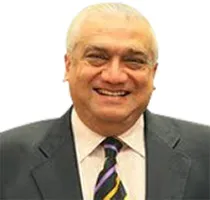-
CENTRES
Progammes & Centres
Location
 PDF Download
PDF Download 
At the end of December last year, as the 90-year old King AAbdullah was admitted to a hospital with a lung infection, Saudi Arabia maintained a respectful calm as its revered monarch of ten years prepared to go into the sunset. But among several American observers there was a near-hysteria as they competed with one another to presage the most dire or outrageous prognostications. The themes were familiar: A fierce power struggle among the royal family members involving princes divided into well-defined factions; the poor health of the crown prince; and the Saudi state on the verge of collapse. Simon Henderson of the Washington Institute for Near East Policy and one of the most prolific writers on Saudi Arabia confidently predicted two weeks before King Abdullah’s death on January 23 that the “coming transition is unlikely to be smooth” and spoke of “two factions [in the royal family] vying for pre-eminence.”
Another commentator, Stephen Kinzer, wrote just three days before Abdullah’s demise that “the most intriguing candidate for collapse is Saudi Arabia.” He mentioned a possible power struggle within the royal family which could be “intense or violent.” On the same lines, Richard Haass wrote in the Financial Times that “the succession issue has been shelved, not solved,” even though a prince of the next generation aged just 55 years has been named in the succession line.
The smooth transfer of power on the day of Abdullah’s death and the clear line of succession for the next two rulers has confounded the doomsayers, but is not surprising to most serious observers of the Kingdom’s royal family. It must be admitted that the family itself, by maintaining a studied opacity about every aspect of its functioning, does not make any effort to facilitate studies by political scientists, leaving the field open to ill-founded speculations. Even the size of the royal family is not known with any degree of certainty. It is estimated that the royal family today numbers at least 15,000 members who are entitled to be referred to as His/Her Highness (HH). There is a sub-grouping within the family: All children and grandchildren of monarchs are entitled to be called His/Her Royal Highness (HRH). The number in the latter, more exclusive group is not known, but male members are usually estimated at 1,500.
What is astonishing about the family is that, in spite of such large numbers, its affairs remain shrouded in secrecy. Two points need to be noted in this regard: One, the family has its own meritocracy, so that the most able members from different branches are brought into the government and given a chance to prove themselves; and two, every effort is made to ensure that no section of the family is marginalised to the extent that its discontent festers and corrodes family unity from within. This has enabled the family to cope with extraordinary challenges, such as the abdication of King Saud in 1964, the assassination of King Faisal by a nephew in 1975 and the prolonged illness of King Fahd, when he was largely incapacitated for ten years from 1995 to 2005.
There is certainly “politics” within the family, as in any state order, with monarchs attempting to strengthen themselves by bringing full brothers, sons or members of certain sub-groups close to them by placing them in senior government positions. In this, the royal family is not very different from a modern political party, with members joining factions of likeminded individuals to position themselves for power and influence.
To maintain family unity (and, by extension, the family’s credibility with the Saudi population at large), monarchs tend to function in a collegial manner, so that policies on issues of family or national importance are the result of consensus among senior royals. This imparts continuity and stability to the national order and avoids dissident groups within the family. There is consequently no room for capricious conduct on the part of rulers; thus, while the political order is authoritarian, it is not a tyranny such as Saddam’s Iraq, Gaddafi’s Libya, Syria of the Assads, or Egypt of its four military dictators.
This is not to suggest that there is never any discord within the family. Recall here the abdication of King Saud in 1964, forced upon him by a coalition of senior royals backing Faisal; or more recently, the abrupt dismissal in November 2012 of interior minister Prince Ahmad, full brother of Fahd, Sultan, Nayef and Salman, and a contender for the throne; or the dismissal of Prince Khalid bin Sultan and later of Prince Khalid bin Bandar as deputy defence ministers. But the point to be noted is that in not one instance did any person express dissatisfaction publically at the treatment meted out to him. Clearly, family unity trumps personal ambition. In any case, unhappiness is not allowed to fester, since a position is usually found for the person concerned or his close family member.
Outside the royal family too, there is a meritocracy in place, so that the Kingdom’s leaders have access to the best possible advice. However, no non-royal has any real role in policymaking. Officials, however exalted their position, are advisers and implementers of policy, so that there are no changes if they are moved out.
The views expressed above belong to the author(s). ORF research and analyses now available on Telegram! Click here to access our curated content — blogs, longforms and interviews.

Talmiz Ahmad joined the Indian Foreign Service in 1974. Early in his career he was posted in a number of West Asian countries (such as ...
Read More +